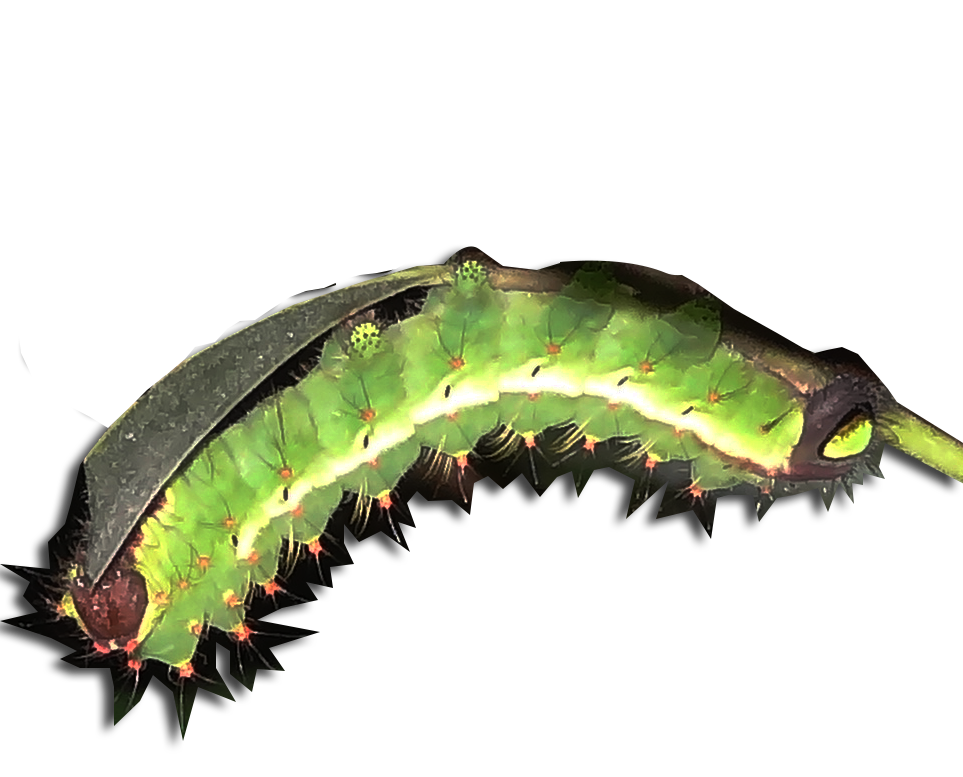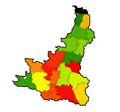Rearing of Tropical Tasar Silkworm
Rearing of Tropical Silkworm
Outdoor rearing exposes tropical tasar silkworms to unfavourable weather conditions and attack by pests and predators. These account for losses of 50-55%, mainly during the early instars. Besides, the improper handling of larvae and the faulty selection of rearing site and plantation, for example, cause severe harm to the health and vigour of the population, which is reflected in a higher rate of mortality from disease (35-40%). Losses can be substantially decreased by a more rational approach to rearing.
Rearing operations
The fate of the crop largely depends on choice of rearing site and food plants, brushing, supervision and maintenance of larval population and other rearing operations. Stackness in any of the operations adversely affects the yield. The following discussion of rearing operations points out the merits and demerits of various improved and traditional methods.
Selection of rearing site and food plants:
The traditional tasar reasers usually utilize the sparsely distributed food plants on the bunds of paddy fields. Waterlogging in the fields during rains raises the relative humidity. Moreover, excreta and dead larvae which have fallen into the water putrefy and pollute the environment. During the dry winter months the scattered plants fail to maintain the atmospheric humidity at the desired level. All these conditions promote the outbreak of diseases. It is desirable to avoid low lying areas. Fairly thick patches of food plants of 3-3.5 m tall are ideal. The bushes must not be utilized for two successive crops in a year.
Rearing preparations:
Before the onset of rearing, the site and the surrounding area should be cleared of weeds, which might otherwise induce pest and predator attacks apart from removing the unsuitable foliage, care should be taken to free the bushes of insects, particulary ants nests. A band of straw with a little ash should be tied around the trunk to check the downward movement of larvae. The trunk base should be encircled with a thin band of gammexane to prevent attack by ants and other insects.
Quality of leaf:
Quality of foliage in relation to larval age is a major determinant of health and vigour. The younger larvae thrive on juicy, tender leaves, while reddish or pale green foliage is harmful. The latter instars require medium to mature leaves. Outdoor rearing cannot ensure provision of the proper quality of leaves during the different instars. Nevertheless, this can be achieved to a degree through various cultural operations and selective utilization of food plants.
Brushing:
Brushing is placing of hatching larvae on the leaves. The traditional cultivators tie the leaf cups containing the eggs on the bushes for hatching. Both the developing embryo and the newly hatched larvae are thereby exposed to fluctuating temperature and humidity, heavy rain, storms and other hazards. This results in poor hatchability and heavy losses of larvae.
A small twig should be placed over each of the newly hatched larvae, which are then tied on the bushes in a uniform distribution. This operation should not be carried out in strong sunlight, heavy rain or other unfavourable conditions.
Supervision and maintenance of larval population:
Outdoor rearing calls for dawn to dusk vigilance against pests and predators. Traditional cultivators brush the larval population too densely without regard to the quantity of foliage. This high density decreases effective yield owing to the higher disease mortality and also adversely affects the economic character of the cocoon.
Frequent direct handling of the larvae causes considerable injury to their health and contaminates the population. It is therefore desirable to transfer the larvae only once or twice by cutting off the small branches bearing larvae and attaching them to unused food plants. A secondary advantage of this system is light pruning of the plants.
Moulting and spinning larvae also need special attention; the former should not be disturbed, and the latter require enough foliage to form the hammock properly.
Dead larvae hanging on the bush or fallen to the ground should be collected every morning and evening. A sample of the dead larvae should be examined for microsporidiosis. All the dead worms should be buried outside the rearing site.
Larvae showing symptoms of microsporidiosis as well as the foliage should be destroyed. Those manifesting other diseases should be reared separately. The rearing appliances and the hands of field workers should be disinfected with dettol water after every contact.
The cocoons should be harvested after six or seven days. The branches are cut and the cocoons are pulled off the twig by breaking it near the ring. The adhering leaves are removed, and the cocooms are graded.
Improved rearing techniques
There is a very heavy population loss, particularly during the first instar, due to outdoor rearing. Attempts at total indoor rearing have so far not been successful; however, controlled rearing techniques have been developed to protect the early stages.
Controlled rearing:
Until the first moult the larvae are reared indoor.
Rearing set:
It consists of a water-filled bottle holding 3 to 5 twigs (about 60 cm long) with quality foliage and a cylindrical polythene enclosure with a split bamboo frame). The cut end of twigs is inserted well under water. This arrangement keeps the foliage turgid for 3 to 4 days feeding. Proper clustering of the foliage to form a nest at the centre of the set prevents the larvae from crawling onto the polythene. The mouth of the bottle is plugged, not protect the larvae from drowning, but also to check an increase in humidity due to gradual exploration of the water. The rearing capacity of the set can be increased considerably by using a big earthern pot or tin container.
Brushing is conducted according to the improved technique of using only one day’s hatchings and avoiding overcrowding. The polythene enclosure which is tied at the bottom around the neck of the bottle and fastened at the top to a support should be opened for about 15 minutes daily for cleaning and for adequate aeration. Special care should be taken to remove the enclosure as soon as the larvae start setting to moult; otherwise the ecdysis is so difficult as to cause heavy mortality. The larvae coming out of moult are allowed to crawl onto fresh twigs and transferred outdoors, observing the precautions previously discussed.
Rearing Huts:
The rearing sets are placed insides a hut thatched with straw or leafy branches(figure 54). It should be constructed on ground that is high enough to be free from waterlogging. The floor should be raised 15 cm above the ground to avert flooding by rain water. The hut should be bordered with a thin band of gammexane to keep away ants. The open side should not directly face the sun and should be closed at night and during bad weather.
A hut 6 x 3 cm can accommodate about ninety rearing sets arranged inn three parallel rows in twi tiers. The space between the rows provides working room ant the spacing of the rearing sets facilities handling.
Benefits of control rearing:
under the traditional rearing method the loss in the first instar alone is generally 30 %. During the remaining larval in stars the losses from diseases and pets are 45 to 50% and from natural calamities 10%. Controlled rearing reduces not only the first – instar losses to as low as 5 % but also diseases mortality during the subsequent stages. The effectives yield thereby increases to 50 to 60 cocoons per disease free laying (dfl) against 15 to 20 with the traditional method. In india the average family of tropical tasar rearer manage 300 to 400 disease free laying.
Rearing upto the third instars is conducted on economic plantation, preferably under nylon netting. Although the overlapping twigs allow the larvae to crawl from one bush to the other, the medium size and regularity of the plantation not only permits more efficient management, supervision and operation but also minimizes loss. Moreover, the larvae are more vigorous as a result of being reared under natural conditions with almost no intervention.
As soon as the larvae have passed the second or third moult, the twigs bearing them are cut and transferred to forest or block plantation for rearing in the advanced stages. To save time and labour in the transfer of early instar population, the rearing centres should be situated as close to the forest as possible.
About 4000 disease free laying (dfl) can be reared upto the third instar on one hectare of economic plantation. The loss during the early instars is reduced to 5 to 6% against 40 to 50% during the corresponding period with the traditional method. Also the advanced stages are less susceptible to diseases. The technique therefore yields a stable and rich harvest 80 to 100 cocoons /dfl.
Furthermore, labour at the cultivator level is reduced substantially by approximately fifteen days of rearing at the centre and the consequent handling of more or less uniform populations. The centres can be organized as cooperatives of ten member rearer each.
Source:
FAO Agricultural Service Bulletin- Manuals on Sericulture, reprinted by Central Silk Board, Bangalore

